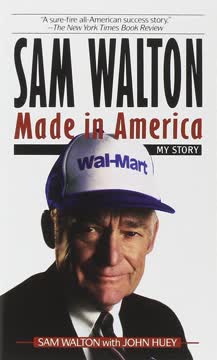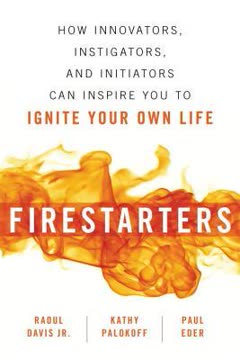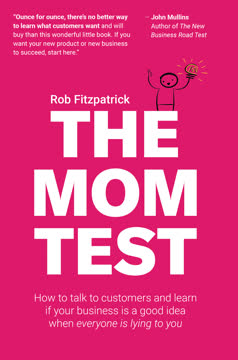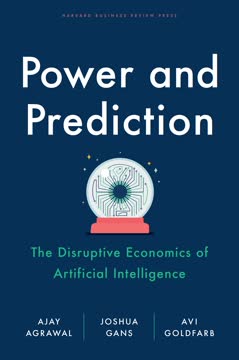Key Takeaways
1. Build a product that solves a universal problem
Great, disruptive entrepreneurs need to understand the capabilities of the technology available to them, the necessity of building new platforms, how to integrate virality into their products and, perhaps most importantly, the power of timing.
Identify a big problem. Successful billion-dollar apps address widespread, universal issues that frustrate millions of people. Examples include WhatsApp solving global communication challenges, Square simplifying payment processing, and Angry Birds capitalizing on the need for engaging mobile entertainment.
Create an elegant solution. Focus on developing a product that solves the identified problem in a simple, intuitive, and effective manner. Utilize the latest mobile technologies, such as smartphone sensors and cloud computing, to create innovative solutions that weren't previously possible.
Time it right. Consider market readiness, technological capabilities, and cultural shifts when launching your product. The success of apps like Instagram and Uber was partly due to their perfect timing in relation to smartphone adoption and changing consumer behaviors.
2. Focus on achieving product-market fit before scaling
The life of any startup can be divided into two parts – before product–market fit (BPMF) and after product–market fit (APMF).
Define product-market fit. Product-market fit occurs when your app satisfies a strong market demand. It's characterized by rapid user growth, high engagement, and positive user feedback. Aim for at least 40% of users saying they would be "very disappointed" without your product.
Iterate rapidly. Use lean startup methodologies to quickly build, measure, and learn. Develop a minimum viable product (MVP) and gather user feedback to refine your offering. Continuously improve your product based on user data and insights.
Delay scaling. Resist the temptation to scale prematurely. Focus on perfecting your product and ensuring strong product-market fit before investing heavily in growth. This approach maximizes efficiency and minimizes wasted resources.
3. Leverage mobile technology and app store ecosystems
The mobile landscape is constantly changing: every week seems to herald the arrival of a new mobile device – from smartphones to smart watches, to tablets, to phablets (that's a combination of phone and tablet).
Embrace mobile-first design. Develop your app with a mobile-first mindset, optimizing for smartphone and tablet interfaces. Consider factors such as screen size, touch interactions, and device capabilities when designing your user experience.
Utilize app store features. Maximize your app's visibility and discoverability by optimizing for app store search (ASO). Create compelling app titles, descriptions, and visuals that effectively communicate your app's value proposition.
Stay current with mobile trends. Keep abreast of emerging mobile technologies, such as wearables, AR/VR, and IoT. Be prepared to adapt your app to new platforms and form factors as the mobile landscape evolves.
4. Implement a scalable and profitable business model early
Gone are the days of not having a business model on Day One. There are only five business models that power all billion-dollar apps – make sure you know which one will power yours.
Choose a proven model. Select from the five core business models that power billion-dollar apps:
- Gaming (in-app purchases)
- E-commerce/Marketplace
- Advertising/Consumer Audience
- Software as a Service (SaaS)
- Enterprise
Validate early. Start generating revenue as soon as possible to validate your business model. This approach provides valuable data and demonstrates viability to potential investors.
Plan for profitability. Design your business model with scalability and profitability in mind. Aim for a customer acquisition cost (CAC) that is significantly lower than the lifetime value (LTV) of your users.
5. Assemble a complementary founding team and hire strategically
90 per cent of founding teams fall into this category. Thirty-five of the companies had several cofounders, the average being three. Four of the companies were founded by individuals.
Build a balanced team. Seek cofounders with complementary skills and experiences. Ideal founding teams often include a visionary, a technical expert, and a business/operations specialist.
Prioritize experience. Favor cofounders and early employees with relevant industry experience. The average age of successful app founders is 34, with many having previous startup experience.
Hire for culture fit. As you scale, prioritize hiring individuals who align with your company culture and values. This approach helps maintain cohesion and productivity as your team grows.
6. Utilize data-driven decision making and rapid iteration
Analytics is the answer. You can include snippets of analytics software in your app so that you can automatically track what every single user is doing on your app – what they are looking at, what they are clicking, how long they spend performing an action and at what point they open and close the app.
Implement robust analytics. Integrate comprehensive analytics tools into your app from day one. Track key metrics such as user acquisition, activation, retention, referral, and revenue (AARRR).
Make data-driven decisions. Use analytics insights to guide product development, marketing strategies, and business decisions. Continuously test and iterate based on user behavior and performance data.
Embrace A/B testing. Regularly conduct A/B tests to optimize your app's features, user interface, and monetization strategies. This approach helps identify the most effective elements for driving user engagement and revenue.
7. Create a strong brand identity and user experience
First impressions count, so make your profile as impressive as possible.
Develop a compelling brand. Create a distinctive and memorable brand identity, including a catchy name, logo, and visual style. Ensure your branding effectively communicates your app's value proposition and resonates with your target audience.
Design for delight. Focus on creating an intuitive and enjoyable user experience. Incorporate elements of surprise and delight to foster emotional connections with your users and encourage word-of-mouth promotion.
Maintain consistency. Ensure a consistent brand experience across all touchpoints, including your app, website, social media presence, and marketing materials. This cohesion builds trust and reinforces your brand identity.
8. Master user acquisition, retention, and monetization
Acquiring users to your app is damn hard work (there are some great exceptions, but even they benefited from having a superb individual manage things behind the scenes).
Diversify acquisition channels. Experiment with various user acquisition channels, including app store optimization, paid advertising, social media marketing, and partnerships. Continuously optimize your channel mix based on performance data.
Focus on retention. Implement strategies to keep users engaged and coming back to your app. Use push notifications, email marketing, and in-app messaging to re-engage users and drive habitual usage.
Optimize monetization. Continuously refine your monetization strategies to maximize revenue per user. Experiment with pricing models, in-app purchases, and advertising formats to find the optimal balance between user experience and revenue generation.
9. Scale operations efficiently while maintaining culture
Scaling is where you – the founder and entrepreneur – create the most value and generate financial rewards. This is, after all, the moment you have been waiting for – the time to show the world that your app can become the undisputed leader.
Implement scalable processes. Develop standardized processes and systems that can support rapid growth. Focus on areas such as product development, customer support, and financial management.
Maintain company culture. As you scale, prioritize maintaining your company's core values and culture. Implement strategies such as regular all-hands meetings, transparent communication, and cultural onboarding for new employees.
Invest in infrastructure. Build a robust technical infrastructure that can handle increased user load and data processing requirements. Consider cloud-based solutions and microservices architecture for flexibility and scalability.
10. Prepare for rapid growth and potential exit strategies
A wise person once told me that companies are never sold: they are acquired. There's great truth in that statement.
Plan for hypergrowth. Develop strategies to manage rapid expansion, including hiring plans, office space requirements, and financial projections. Be prepared to adapt quickly to changing market conditions and opportunities.
Consider exit options. Familiarize yourself with potential exit strategies, including acquisitions and IPOs. Understand the pros and cons of each option and how they align with your long-term vision for the company.
Build strategic partnerships. Cultivate relationships with potential acquirers or strategic partners in your industry. These connections can lead to valuable opportunities for growth, collaboration, or eventual exit.
Last updated:
FAQ
What's How to Build a Billion Dollar App about?
- Comprehensive Guide: The book is a detailed guide for entrepreneurs aiming to create successful mobile apps, covering everything from ideation to scaling.
- Author's Experience: George Berkowski shares insights from his time at Hailo and interviews with successful app entrepreneurs.
- Structured Approach: It is divided into two parts: "Think Big" for ideation and market understanding, and "The Journey" for practical development and scaling steps.
Why should I read How to Build a Billion Dollar App?
- Actionable Advice: Offers practical, actionable strategies rather than theoretical concepts, making it a valuable resource for aspiring app entrepreneurs.
- Real-World Examples: Includes case studies from successful apps like WhatsApp, Instagram, and Hailo to illustrate key strategies.
- Understanding the App Economy: Provides insights into the rapidly evolving mobile app landscape, helping readers understand market dynamics and user behavior.
What are the key takeaways of How to Build a Billion Dollar App?
- Product-Market Fit: Achieving this is crucial for success; it involves understanding user needs and iterating based on feedback.
- Strong Team Importance: Building a founding team with complementary skills is essential for the venture's success.
- Data-Driven Decisions: Emphasizes using metrics and analytics to guide decisions, ensuring entrepreneurs can measure success and adapt strategies.
What is product-market fit, and why is it important according to How to Build a Billion Dollar App?
- Definition: Product-market fit occurs when a product meets the needs of a specific market, leading to satisfied users willing to pay.
- Indicators: At least 40% of users should express they would be "very disappointed" without the product, indicating strong demand.
- Growth Impact: Achieving product-market fit often leads to rapid user growth and increased revenue potential.
How do I validate my app idea according to How to Build a Billion Dollar App?
- User Feedback: Engage with potential users early to test your app concept and gather feedback on its viability.
- Prototypes: Develop a minimum viable product (MVP) to demonstrate your idea and test it with real users.
- Measure Engagement: Use analytics to track user interactions and satisfaction, adjusting your app based on collected data.
What are the five core business models discussed in How to Build a Billion Dollar App?
- Gaming Model: Revenue through in-app purchases or premium downloads, exemplified by games like Angry Birds.
- E-commerce/Marketplace Model: Apps like Uber, where users pay for services or goods directly through the app.
- Consumer Audience/Advertising Model: Apps such as Instagram leverage large user bases for advertising revenue.
- Software as a Service (SaaS): Charging users for access to cloud-based software, as seen with apps like WhatsApp.
- Enterprise Model: Companies pay for larger software solutions, a growing area for app developers.
How can I effectively acquire users for my app according to How to Build a Billion Dollar App?
- App Store Optimization (ASO): Optimize your app’s title, description, and keywords to improve visibility in app store searches.
- Social Media Leverage: Build a presence on social media platforms to engage potential users and promote your app.
- Public Relations Efforts: Reach out to bloggers and journalists to generate buzz around your app, increasing its visibility.
What metrics should I focus on to measure my app's success according to How to Build a Billion Dollar App?
- Acquisition Metrics: Track how many users download your app and engage with it post-installation.
- Activation Metrics: Measure how many users complete key actions, indicating they find value in your app.
- Retention Metrics: Monitor how often users return to your app, as high retention rates are crucial for long-term success.
What is the importance of a founding team in app development according to How to Build a Billion Dollar App?
- Complementary Skills: A strong founding team should have diverse skills, including product vision, technical expertise, and marketing knowledge.
- Shared Vision: Cofounders should align on the company’s goals and values, ensuring a unified approach.
- Support System: Having cofounders provides emotional and practical support during the ups and downs of startup life.
How do I prepare for investment according to How to Build a Billion Dollar App?
- Solid Prototype: Ensure your app is functional and has demonstrated user interest before seeking investment.
- Gather Data: Collect metrics on user acquisition, activation, and retention to present to potential investors.
- Understand Valuation: Be prepared to discuss your app's valuation and equity offerings during negotiations.
What strategies does How to Build a Billion Dollar App suggest for user retention?
- User Experience Focus: Continuously improve the app based on user feedback to enhance satisfaction and loyalty.
- Regular Communication: Engage users through updates, notifications, and personalized messages to maintain interest.
- Incentives for Returning Users: Offer rewards or discounts to encourage frequent engagement with the app.
What funding strategies are recommended in How to Build a Billion Dollar App?
- Understanding Funding Stages: Different stages require different approaches and understanding of investor expectations.
- Building Investor Relationships: Networking and building relationships with potential investors can lead to better opportunities.
- Demonstrating Traction: Show strong user growth and engagement metrics to enhance chances of securing investment.
Review Summary
How to Build a Billion Dollar App receives mostly positive reviews, with readers praising its comprehensive and practical approach to app development and business scaling. Many find it valuable for entrepreneurs and developers, offering insights into various stages of building a successful app company. The book covers topics like team building, funding, analytics, and growth strategies. Some readers note that certain technological aspects are outdated, but overall, the book is considered a useful guide for anyone looking to create a mobile app business. A few criticize its length and repetitiveness.
Similar Books








Download PDF
Download EPUB
.epub digital book format is ideal for reading ebooks on phones, tablets, and e-readers.




